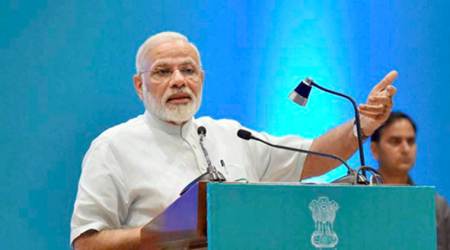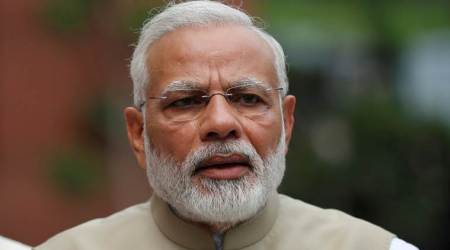 Prime Minister Narendra Modi.
Prime Minister Narendra Modi.
“I dream of a digital India where mobile and e-banking ensures financial inclusion.” — Prime Minister Narendra Modi
Financial inclusion is the way governments strive to take the common people along by bringing them into the formal channel of the economy, thereby ensuring that even the last person in the queue is not left out from the benefits of economic growth. The poor, by becoming a part of the mainstream economy, are encouraged to invest in various financial products and to borrow from formal channels.
The lack of financial inclusion is costly to the individual as well as to society as a whole. For the individual, a lack of financial inclusion forces the unbanked into informal banking sectors where interest rates are higher and the amount of available funds much smaller. Because the informal banking structure is outside any legislative framework, any dispute between lenders and borrowers cannot be settled legally. As far as the social benefits are concerned, financial inclusion increases the amount of available savings, the rate of capital formation, efficiency of financial inter-mediation, and thereby allows the tapping of new business opportunities.
State sponsored universal banking has, therefore, contributed to a greater economic diversification in rural areas than is the case in the more competitive banking environments. With structural adjustment programmes being introduced in the 1980s and 1990s, financial market reforms swept over many developing countries. At the beginning of the 20th century, India had insurance companies (both life and general) and a functional stock exchange.
The scope of financial inclusion is not limited to banking services. It extends to other financial services like insurance, equity products, pension products etc. Thus, financial inclusion is not just about opening a bank account or a branch in an unbanked area.
Financial inclusion also helps government plug gaps and leakages in public subsidies and welfare programmes as the government can directly transfer the subsidy amount into the account of the beneficiary. In fact, the government has saved more than Rs 57,000 crore in its subsidy bill and ensured that the benefit of the subsidy reaches the real beneficiary directly.
The NDA government, led by Prime Minister Narendra Modi, committed itself since the beginning of its term to give special emphasis to the financial inclusion of every person in the country. One of the most crucial of the several steps taken by this government to that end is JAM — Jan Dhan, Aadhaar and Mobile.
With a view to increase the penetration of banking services and to ensure that all households have at least one bank account, the Pradhan Mantri Jan Dhan Yojna was announced by PM Modi in his Independence Day speech on August 15, 2014, and the scheme was formally launched on August 28, 2014. Within a fortnight, the scheme entered the Guinness World Records for opening a record number of bank accounts. By mid-August 2017, 29.48 crore accounts were opened, out of which 17.61 crore accounts were in rural/semi-urban areas and 11.87 crore in urban areas. On opening an account under the Jan Dhan Scheme, a customer gets the additional benefits of a RuPay debit card with an inbuilt insurance cover of Rs 1 lakh and an overdraft (OD) facility of Rs 5,000 is granted to the customer for satisfactory operation of the account for six months. A life cover of Rs 30,000 has also been granted for opening accounts in a certain time period. The scheme has been a great success and the 99.99 per cent of the 21.22 crore households surveyed have been covered under this scheme by December 2016. More than 44 lakh accounts have been sanctioned the OD facility of which more than 23 lakh account holders have availed the facility involving an amount of around Rs 300 crore.
In order to provide social security to all citizens and especially to the poor and underprivileged, the present government launched the Pradhan Mantri Suraksha Bima Yojana (PMSBY) and Pradhan Mantri Jeevan Jyoti Bima Yojana (PMJJBY).
The PMSBY covers persons between 18 to 70 years and a risk cover of Rs 2 lakh is provided at an affordable premium of Rs 12 per annum. As of April 12, around 10 crore people were enrolled under the PMSBY, which covers persons between 18 to 50 years with a bank account. A life cover of Rs 2 lakh is provided to the insured, payable in the event of the death of the insured due to any reason.
The Atal Pension Yojana, launched in 2015, is open to all bank account holders between 18 to 40 years and they can choose different premiums based on the pension amount. Under this scheme, a monthly pension is guaranteed to the subscriber and after him to his spouse and after their death, the pension corpus as accumulated till the age of 60 years is given to the nominee of the subscriber. The central government also contributes 50 per cent of the premium subject to a maximum of Rs 1,000 per annum. As on March 31, a total of 46.80 lakh subscribers have been enrolled in the Atal Pension Yojana with a total pension worth Rs 1713.214 crore.
To expand the network of ATMs, the RBI has allowed non-bank entities to start ATMs (called “White Label ATMs”). RuPay Cards have significantly increased its market share to 38 per cent (250 million) of the total 645 million debit cards in the country so far. The card has been provided to the account holders of PMJDY (170 million).
Financial Literacy Centres were started by commercial banks at the request of the RBI. The central bank’s policy is that financial inclusion should go along with financial literacy. The launch of direct benefit transfers through the support of Aadhaar is a major biggest factor that led people to open new bank accounts and continue to use them. To further strengthen financial inclusion in the country, the government has advised the banks to deploy micro ATMs in rural areas and consequently, 1,14,518 micro ATMs had been deployed by December 2016.
With the venture capital scheme, SC/ST groups were encouraged to become job providers instead of job seekers. Initially, in this scheme, loans were provided from Rs 50 lakh to Rs 15 crore and from Rs 20 lakh to 15 crore. The government had encouraged SCs/STs to stand on their own. The schemes of 70 ventures and funds to the tune Rs 265 crore have been approved, and funds to 40 ventures have already been distributed. These ventures, on average, provide employment to 20-25 people.
In conclusion, the government is committed to its target — the inclusion of every household in the financial system so that the masses can get all the legitimate benefits arising out of the growth of the country. The funds mobilised from the people, now being brought in to the formal channel, will give the economy an extra thrust on its path of growth.

